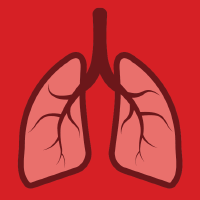Topic Menu
► Topic MenuTopic Editors


Cell Signaling Pathways
.png)
Topic Information
Dear Colleagues,
Cell signaling or cell communication explores how a cell receives and sends messages to other cells in the environment to regulate its internal workings to survive. The study of cell signaling includes all biological disciplines, such as cancer biology, developmental biology, immunology, neurobiology, plant cell signaling and pathogenesis. Two major areas of cell signaling are membrane signaling initiated by membrane-bound receptors and signaling between and within intracellular compartments. The downstream effects of signaling pathways include enzymatic activities such as proteolytic cleavage, phosphorylation, methylation, ubiquitinylation, and changes in gene expression. Despite emerging technical advances, a thorough apprehension of cell signaling pathways and their precise contributions to different biological disciplines is largely lacking. In this Topic, the most recent findings on the contribution of cell signaling pathways to developmental biology, cancer hallmarks, plant cell signaling, pathogenesis, immunology, homeostasis, endocrinology, and neurobiology will be outlined.
Dr. Majid Momeny
Dr. Vishnu Suresh Babu
Dr. Avisek Majumder
Topic Editors
Keywords
- cancer
- endocrinology
- immunology
- diabetes
- neurobiology
- development
- pathogenesis
- plant cell signaling
- allergies
- behavioral biology
Participating Journals
| Journal Name | Impact Factor | CiteScore | Launched Year | First Decision (median) | APC |
|---|---|---|---|---|---|

Biomolecules
|
4.8 | 9.2 | 2011 | 19.4 Days | CHF 2700 |

Cells
|
5.2 | 10.5 | 2012 | 16 Days | CHF 2700 |

Journal of Developmental Biology
|
2.5 | 4.5 | 2013 | 26.2 Days | CHF 1800 |

Journal of Respiration
|
- | - | 2021 | 30.5 Days | CHF 1000 |

Pathogens
|
3.3 | 6.8 | 2012 | 13.5 Days | CHF 2200 |

Preprints.org is a multidisciplinary platform offering a preprint service designed to facilitate the early sharing of your research. It supports and empowers your research journey from the very beginning.
MDPI Topics is collaborating with Preprints.org and has established a direct connection between MDPI journals and the platform. Authors are encouraged to take advantage of this opportunity by posting their preprints at Preprints.org prior to publication:
- Share your research immediately: disseminate your ideas prior to publication and establish priority for your work.
- Safeguard your intellectual contribution: Protect your ideas with a time-stamped preprint that serves as proof of your research timeline.
- Boost visibility and impact: Increase the reach and influence of your research by making it accessible to a global audience.
- Gain early feedback: Receive valuable input and insights from peers before submitting to a journal.
- Ensure broad indexing: Web of Science (Preprint Citation Index), Google Scholar, Crossref, SHARE, PrePubMed, Scilit and Europe PMC.

